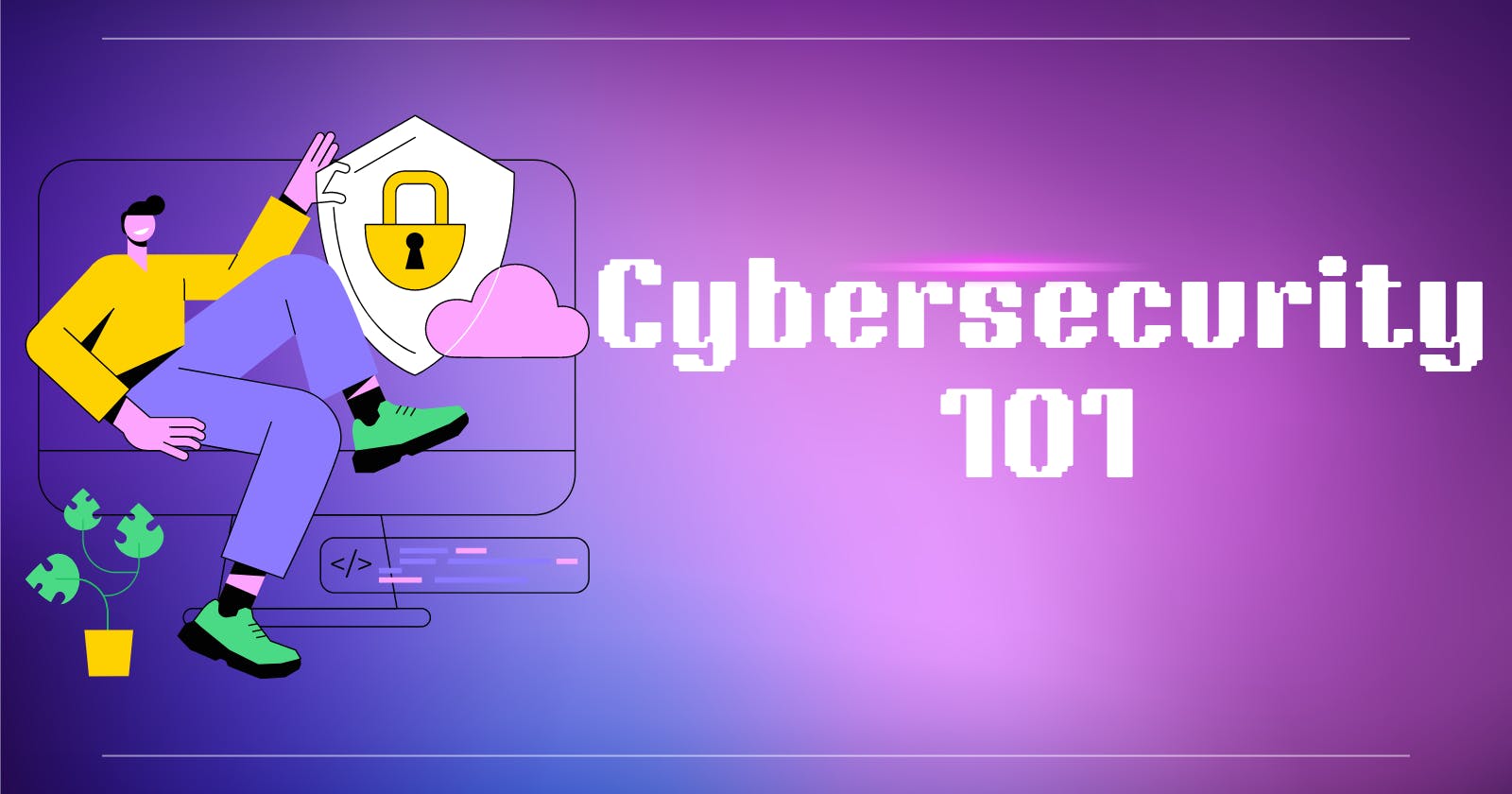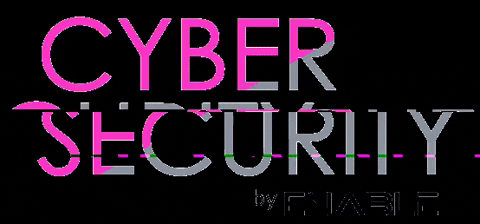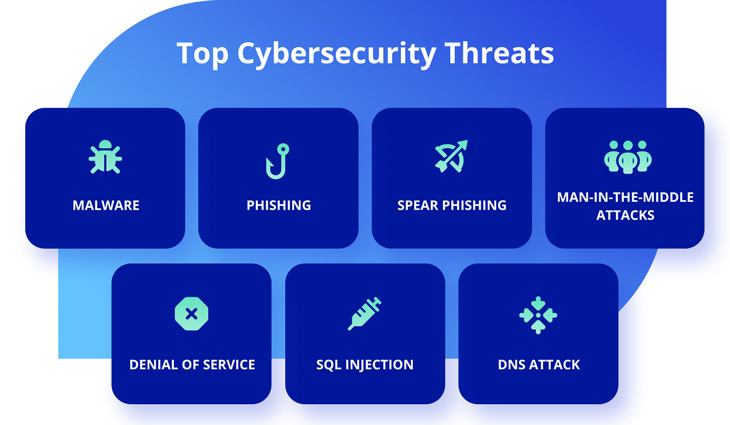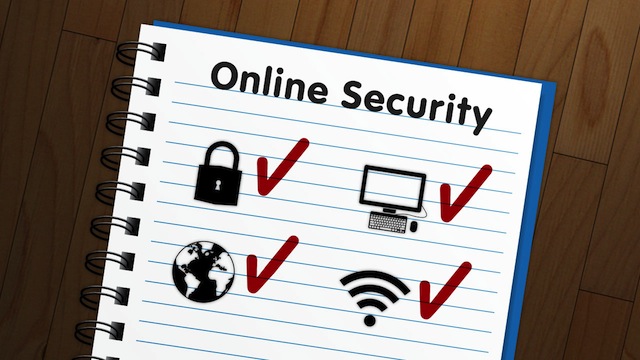Cybersecurity 101: Protecting Yourself in the Digital World
5 min read

Welcome to the world of cybersecurity!

As a beginner, you may have heard the term "cybersecurity" being thrown around a lot, but you may not fully understand what it means or why it is so important. By the end of this article, you'll be equipped with the knowledge and tools necessary to protect yourself from cyber threats and understand the importance of cybersecurity in today's digital age.
What is Cybersecurity?

Cybersecurity includes securing computers, servers, mobile devices, electronic systems, networks, and data from digital attacks, theft, damage, or unauthorized access. Cybersecurity aims to protect information by preventing unauthorized access and ensuring confidentiality, integrity, and availability.
Why is Cybersecurity Important?
In today's increasingly digital world, it's hard to imagine our daily lives without technology.

We depend on technology more than ever before. It has changed the way we interact, works, and have fun. Digital systems are now an integral part of our daily lives. From online banking to social media, technology has revolutionized the way we conduct our daily activities. Regrettably, as technology progresses, so do the risks to our security.
Cybercriminals continually seek ways to access our personal information, including credit card details, social security numbers, and login credentials. Without proper cybersecurity measures, we are vulnerable to cyber attacks, which can have severe consequences, including financial loss, identity theft, and damage to our reputation.
Cybersecurity Risks

Cybersecurity risks are potential threats that can exploit security gaps or flaws in digital systems, networks, or data. These risks can come in many forms, including viruses, malware, phishing, and social engineering. They can affect individuals, businesses, and even governments. The consequences of cyber attacks can be severe, ranging from data theft and financial loss to disruption of critical infrastructure and even loss of life.
Common Cybersecurity Threats

When it comes to cybersecurity, there are several threats that you need to be aware of as a beginner. These threats can take many forms, but the most common ones include
- Phishing
Phishing is a technique used by cybercriminals to steal sensitive information such as usernames, passwords, and credit card details. They do this by sending fraudulent emails or messages that appear to be from a legitimate source, such as a bank or an online retailer. Once you click on the link in the email or message you'll be redirected to a fake website that looks identical to the real one. Be cautious when entering login credentials or personal information, as cybercriminals may steal it for nefarious purposes.
- Malware
Malware is a type of software that is designed to harm your computer, steal your data, or disrupt your network. Malware can take many forms, including viruses, worms, trojans, and ransomware. Once the malware infects your system, it can cause a lot of damage, including deleting files, stealing data, and even taking control of your computer.
- Social Engineering
Social engineering is a tactic used by cybercriminals to manipulate individuals into revealing sensitive information or taking actions that can compromise their security. Social engineering techniques include phishing emails, phone calls, or in-person visits. By building trust with their victims, cybercriminals can trick them into revealing confidential information or granting access to secure systems.
As you can see, these cybersecurity threats can be dangerous and have serious consequences. By understanding these threats and taking the necessary precautions, you can protect yourself from these risks and stay safe online.
Cybersecurity Best Practices
As a beginner in cybersecurity, it's necessary to develop good habits when it comes to protecting your digital assets. Here are some best practices to follow:
Password Management
Password management is a critical component of cybersecurity. Here are some tips for creating and managing strong passwords:

Create complex passwords that are difficult to guess using a combination of uppercase and lowercase letters, numbers, and special characters.
Avoid using the same password for multiple services. If one password is compromised, all your online accounts, such as email, social media, and banking, will be at risk.
Use a password manager to securely store your passwords and generate unique, strong passwords for each account.
Software Updates
Keeping your software up-to-date is crucial for maintaining your cybersecurity. Here are some tips for managing software updates:

Enable automatic software updates whenever available to ensure you are running the latest version.
Download software updates directly from the vendor's website to avoid downloading malware-infected versions.
Keep your operating system and all software applications up-to-date, including your antivirus software and web browser.
Safe Internet Browsing
The internet can be a dangerous landscape, but fortunately, there are measures you can adopt to safeguard yourself while browsing. Here are some tips for safe internet browsing:

Use a secure web browser, and enable privacy and security settings such as HTTPS, pop-up blockers, and anti-tracking tools.
Avoid clicking on suspicious links or downloading files from untrusted sources.
Be wary of phishing scams designed to trick you into giving away your personal information.
Now you can significantly reduce your risk of falling victim to a cyber attack. Remember, cybersecurity is a continuous process, so stay informed and keep your security practices up-to-date.
Conclusion
Congratulations🎉! You've taken a necessary first step in protecting yourself against cybersecurity threats. By learning about common cyber risks, best practices, and available tools and technologies, you can take control of your digital safety and protect yourself from potential threats.
Remember, cybersecurity is an ongoing process. It's necessary to stay updated on the latest threats and best practices and to be vigilant in your online activities. But don't worry. You don't have to do it alone. There are plenty of resources available to help you stay informed and protected.
Keep learning, stay curious, and ask questions! By doing so, you'll be well on your way to becoming a cybersecurity pro in no time!
Thank you for reading this beginner's guide to cybersecurity. Stay safe and secure!
You can also join me on my socials: Twitter, LinkedIn, ShowwCase, GitHub